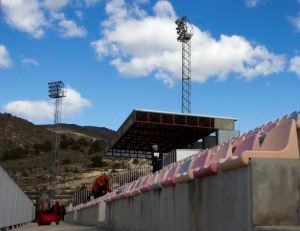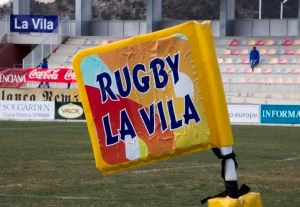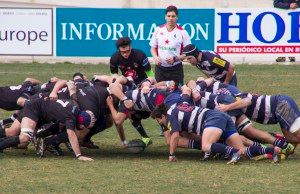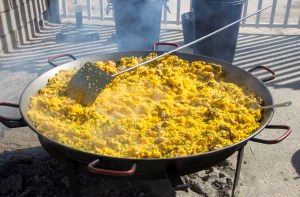As this year's RBS Six Nations tournament gets to its meaty stage, it's time to have a look at the state of rugby here in Spain. Ask anyone what sports are played in Spain and the first answer will surely be football. Basketball may well get a mention too, and maybe even handball. Few, if any people would come up with rugby as an answer though. Rugby Union in Spain may well be a minority sport, but with 221 clubs playing the sport in various divisions, it is more popular than you may have thought, especially in certain parts of the country.

The game has actually been played in Spain for over a hundred years. The Spanish Rugby Federation was founded in 1923 and became a member of the International Rugby Board in 1988. In 1999 they even qualified for the World Cup but lost all three games. They may have sustained heavy defeats against South Africa and Scotland, but I bet they were smirking as Italy were trounced 67-7 by England and then 101-3 by New Zealand! Sadly, they haven’t managed to qualify again and are currently 21st in the International rankings but a recent win against Russia in the second tier of European rugby, the European Nations Cup, will have given them hope of climbing up a place or two

On a club level, the top flight is known as the Division of Honour. The league began in 1953 but after 2 years it stopped, starting again in 1970 and it has been operating ever since. There are no clubs south of Madrid competing at this level, and a heavy concentration of top flight rugby is played in the Basque region. Below that, the Division of Honour B is split into three regional divisions with the top two from each participating in a round-robin mini-league to decide who will be promoted and who will play off against the 11th placed side in the top flight.

It is into this league that I ventured last month. A few kilometres south of Benidorm is the town of Villajoyosa. The town is the home of La Vila Rugby Club. Their stadium is a little out of town on the mountains side of the A7 motorway. It’s a lovely ground in a picturesque location and it was a very friendly atmosphere as the team took the field to take on bottom-of-the-table BUC Barcelona. In reality, it wasn’t much of a competition as the hosts ran out 57-13 winners and scored some very good tries in doing so. It was a good game to watch though, and we will be back. It’s tight at the top of their league with the top three clubs virtually neck-and-neck(-and-neck!) with two games to play. It’s a shame that one of the three will miss out on the play-off round. Let’s hope it’s not La Vila. Their two rivals will play each other on the final weekend of the regular season at the end of March so there’s every chance the season will be extended. Promotion back to the top would be nice as they were actually Spanish champions as recently as 2011.

After the game at La Vila you can enjoy a portion of a huge paella cooked just inside the entrance to the ground. It looked delicious but a menu del dia on the seafront was calling me so I didn't get to try it.
 It’s not just men’s 15-a-side rugby which is making headway in Spain though. There is a small women’s league in progress too. There is even a Rugby 7s tournament hosted by La Vila at the end of May. It’s called the Benidorm Sevens and this year will be their 29th year with teams from around the world competing.
It’s not just men’s 15-a-side rugby which is making headway in Spain though. There is a small women’s league in progress too. There is even a Rugby 7s tournament hosted by La Vila at the end of May. It’s called the Benidorm Sevens and this year will be their 29th year with teams from around the world competing.
If you have enjoyed this blog, take a look at www.anythingbutpaella.com for some more unusual things to see in Spain.